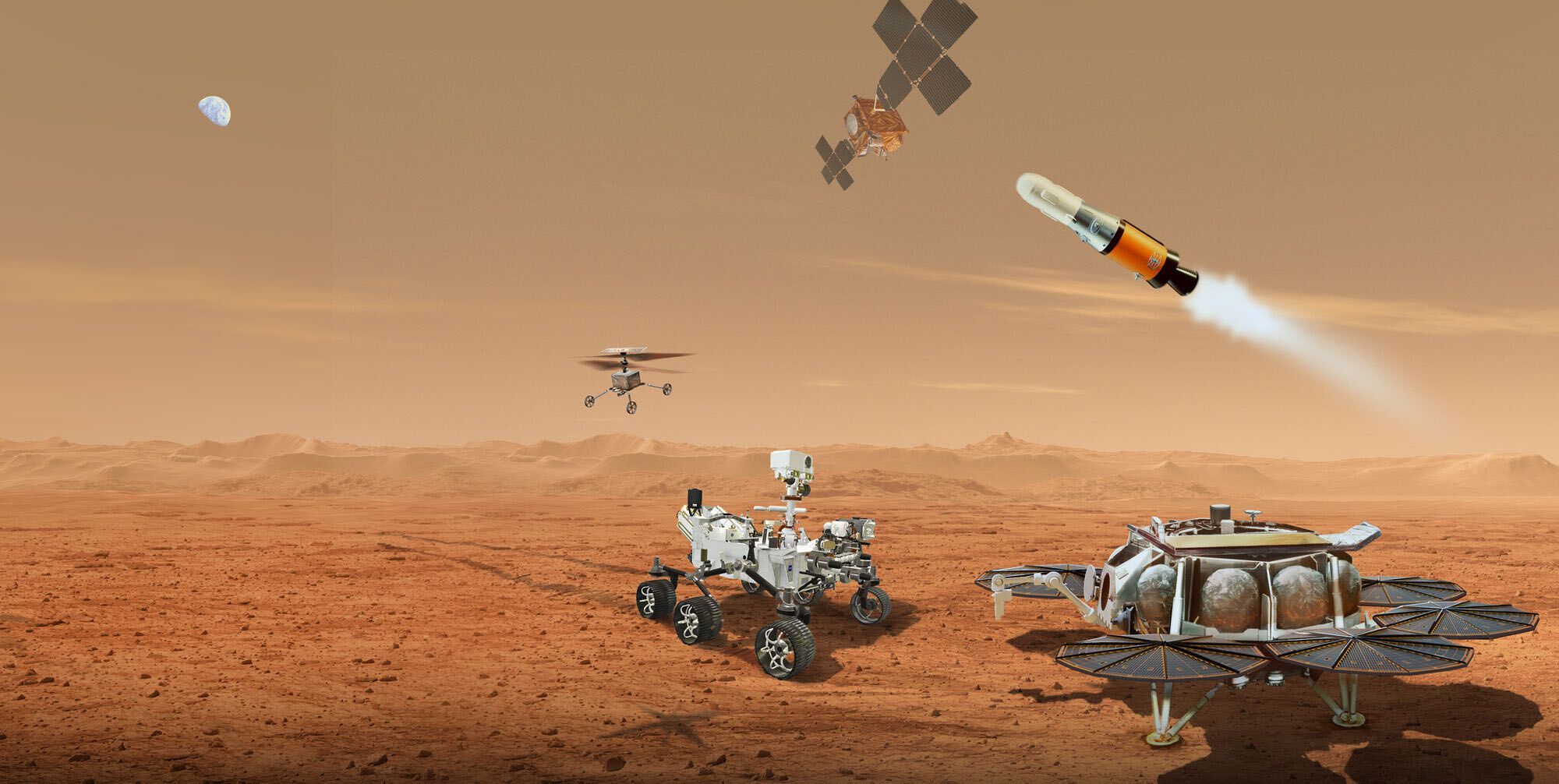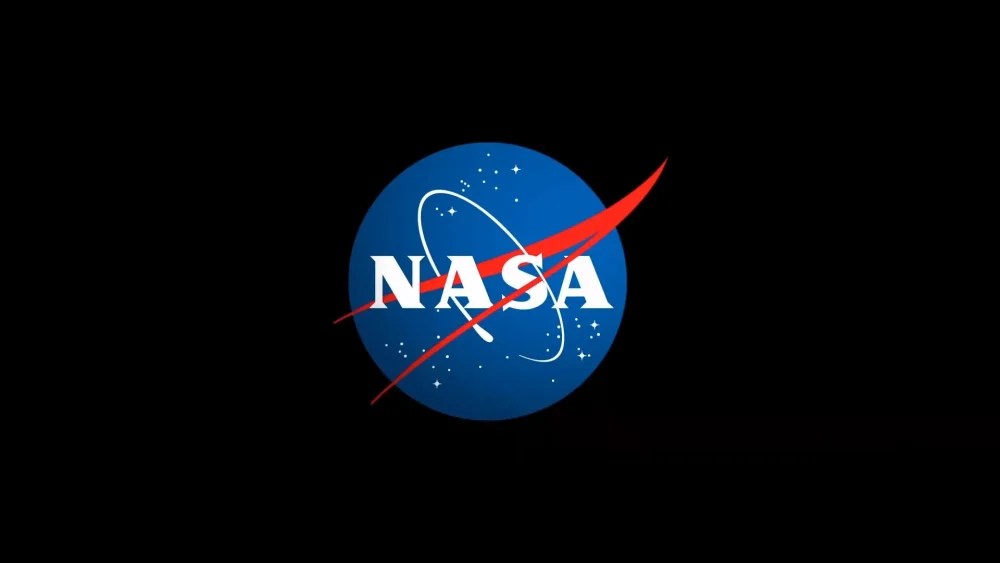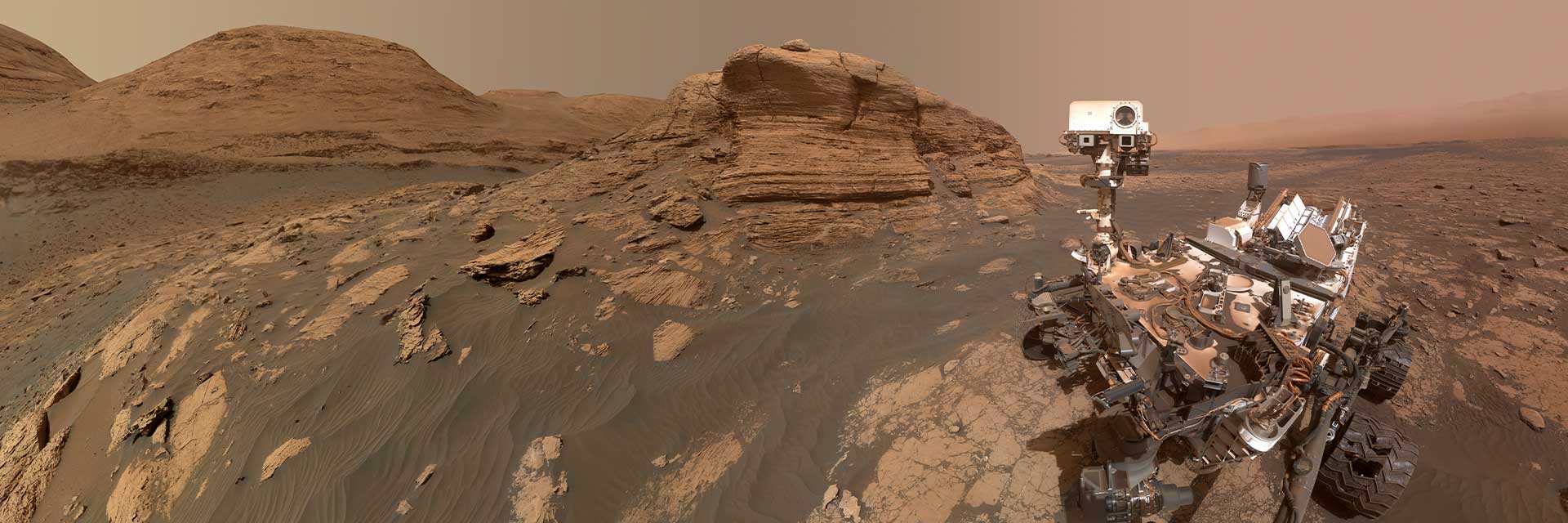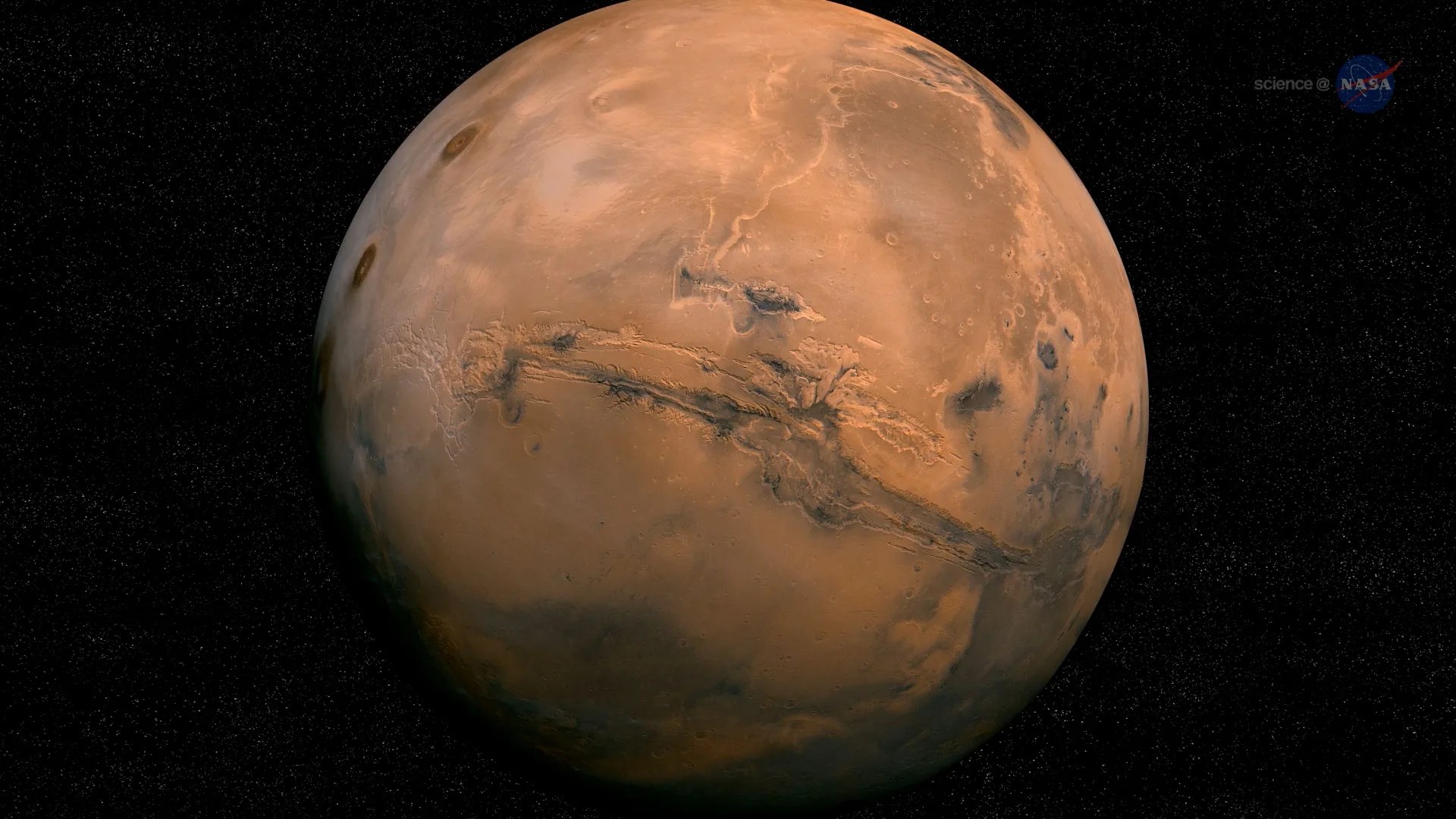Mars Sample Return
Mars Sample Return would be NASA’s most ambitious, multi-mission campaign that would bring carefully selected Martian samples to Earth for the first time.

Mars Rock Sample Montage
These high-resolution images highlight the diversity of materials obtained during the rover’s first thee and a half years on the Red Planet.
Download the Video and Social Media ImagesSeeking Innovative Designs
On April 15, 2024, NASA announced the agency’s path forward for the Mars Sample Return campaign to seek innovative designs that will lower cost, risk, and mission complexity. To achieve this goal, the agency has asked the NASA community to work together to develop a revised plan that leverages innovation and proven technology, as well as soliciting architecture proposals from industry that could return samples to Earth in the 2030s.
Learn More
What is a Potential Biosignature?
Landing Site: Jezero Crater
Jezero Crater tells a story of the on-again, off-again nature of the wet past of Mars. More than 3.5 billion years ago, river channels spilled over the crater wall and created a lake. Scientists see evidence that water carried clay minerals from the surrounding area into the crater lake. Conceivably, microbial life could have lived in Jezero during one or more of these wet times. If so, signs of their remains might be found in lakebed or shoreline sediments. The Sample Retrieval Lander would land near the Perseverance rover's landing site in Jezero Crater.

Discover Mars
Mars is the fourth planet from the Sun, and the seventh largest. Scientists seek to understand whether Mars was, is, or can be, a habitable world. To find out, we need to understand how geologic, climatic, and other processes have worked to shape Mars and its environment over time, as well as how they interact today.








